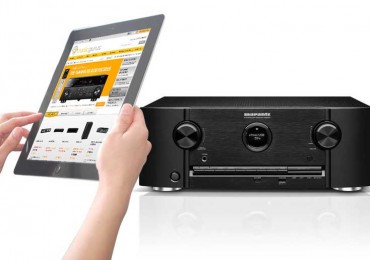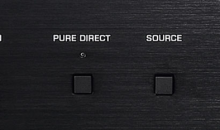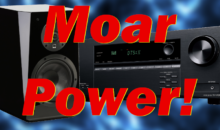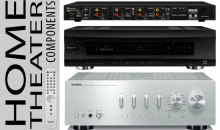Should I Upgrade My Audio Receiver?
The question we get asked the most by friends, family and, well, complete strangers, is: “Should I upgrade my audio receiver?” My immediate answer is always, “Sure!” But in all seriousness, there is a lot to factor in when making an upgrade decision. While I’m always an encourager of upgrading, there are times when I would recommend waiting a cycle or two—particularly if it means you can then afford to upgrade to the next level up in amplifier quality and functionality.
So what drives the decision to upgrade? When is it time to get a new surround receiver and when and how do you factor in all of the features to understand what exactly you’re getting? Following is a basic guide that will help you decide what you need to know and how you can plan your next AV receiver upgrade.
What Are Your Present Capabilities and Needs?
Understanding where you’re at is the first step in knowing where you’re going. While that may sound a bit “Confucius.” it’s actually quite practical as well. Take inventory of your current gear and draw a quick sketch of what you need to hook it up and how. And if you aren’t yet adept at doing that, read some of our home theater setup guides and glean the information you need there before moving forward.
Upgrading your AV receiver is going to follow a couple things. First, you should be able to benefit from the new features afforded by the upgraded product, so take into account any new purchases you’ve made, such as a new television or an updated smart phone, set-top box or music player. Connecting those devices to a new receiver is very different from many legacy systems.
You also want to take into account any equipment upgrades you may have performed that actually help simplify your setup. For example, while video upconversion is a flat-out necessity if you are running analogue video sources like the original Wii system or an older DVD player, if you’ve upgraded your gaming rig to HD and you’re now using Blu-ray, you may find that you simply don’t need that technology, and simple HDMI switching will take care of all of your needs.
Know your sound system and understand what you’re trying to connect, and you’ll take a huge leap forward in your ability to better understand your options when upgrading.
Take Into Account Future Gear Upgrades
The last thing you want to do is upgrade your AV receiver, only to discover that you want to expand your system shortly thereafter and you’re stuck with a product that doesn’t meet your needs. I’ve seen this happen with people buying an AV receiver and then wanting to add a second zone, or outdoor speakers. If you don’t have a discrete Zone 2 output, you’re stuck with an AV receiver that can’t meet those kinds of needs—at least not in the way that you may want.
If you only have a couple source components, but your kids are turning into teenagers and will want the latest and greatest gaming systems, then you may want to make sure you have enough inputs to avoid a traffic jam on your HDMI inputs. It’s often not that hard to get even entry-level AV receivers with lots of digital HDMI inputs, but it’s still good to make sure you have what you need, should that Blu-ray player get some much-needed company.
Finally, it can never hurt to factor in future loudspeaker upgrades. While that entry-level speaker system might power up just fine off the amplifiers in that $200 receiver, an upgraded pair of stereo tower speakers may not fare so well. Buy enough amplifier power to let yourself upgrade one component at a time, without having to redo absolutely every piece of AV gear in the room.
Should I Upgrade What Is the Goal?
If you’re upgrading your AV receiver simply because you’re coming out of the stone age and into the modern world of HDMI and digital audio, then you’re going to be in for a treat. If, however, you’re upgrading because you want better quality audio, then you may want to ensure that you’re going far enough in your pursuit of audio excellence. For example, moving from 80W per channel to 100W per channel may not be the silver bullet you think it is. On the other hand, if you’ve just spent considerable money on a loudspeaker upgrade and you’re trying to power them off an entry-level budget receiver, then you’re on the right track in wanting to upgrade your surround receiver.
Pay Attention to What Matters to You
In keeping with the spirit of the last piece of advice, you want to really make sure you pay attention to the features that apply to you. For example, if you’re running a 5.1 surround system in a room that really can’t support 7.1, then a 9.2-channel receiver isn’t going to be a big deal for you—at least not with respect to the primary listening room. If, on the other hand, you want to send that extra amplification to other parts of the house, then a few more amps than you need might be just the ticket.
If you’re an iOS user, you will almost certainly be interested in surround receivers that include AirPlay technology for wireless streaming audio. Bluetooth and USB connectivity are nice, but AirPlay is a rock-solid technology for Apple devices. For PC-users and anyone wanting to stream from a networked computer, DLNA streaming support is a must. If you take a lot of home movies, then MHL (Mobile High-definition Link) is a must for easy connectivity of portable media devices like smart phones and tablets.
Are You Open to Jumping Ship (Manufacturers)?
Finally, one of the things we counsel people on is reducing their reticence to crossing manufacturer lines. Just because you’ve run a Harman Kardon receiver for years doesn’t mean you might not be better off jumping over to a Yamaha receiver, Marantz receiver or Denon receiver—you might be surprised. Being close-minded when it comes to brands simply means that you may miss out on the strengths one manufacturer may have over another in an area in which you’d benefit. Look at all of your options before making a choice—you’ll be glad you did.
Plan Your Next Steps
[bscolumns class=”one_half”]
Start Shopping
The Audiogurus Advantage
[/bscolumns]
[crp limit=”6″ heading=”1″ cache=”1″]
Finished Researching?








not interested in surround sound, just and receiver for music and floor standing speakers, multi room would be nice. any suggestions?